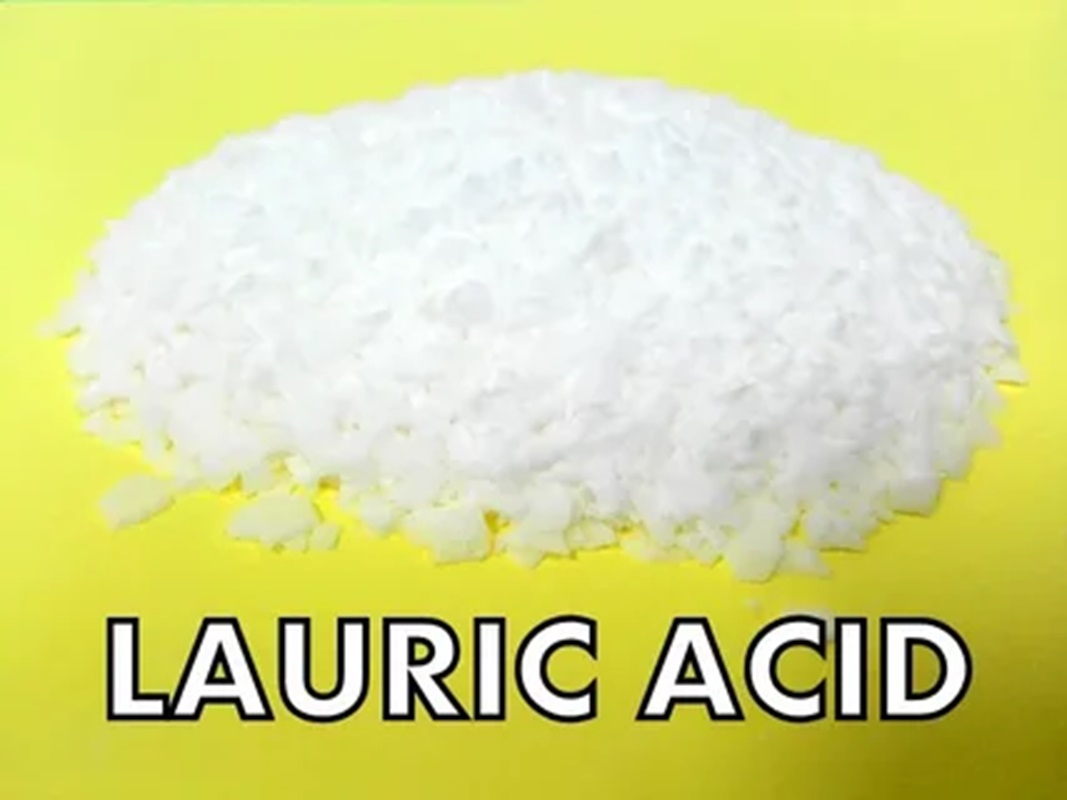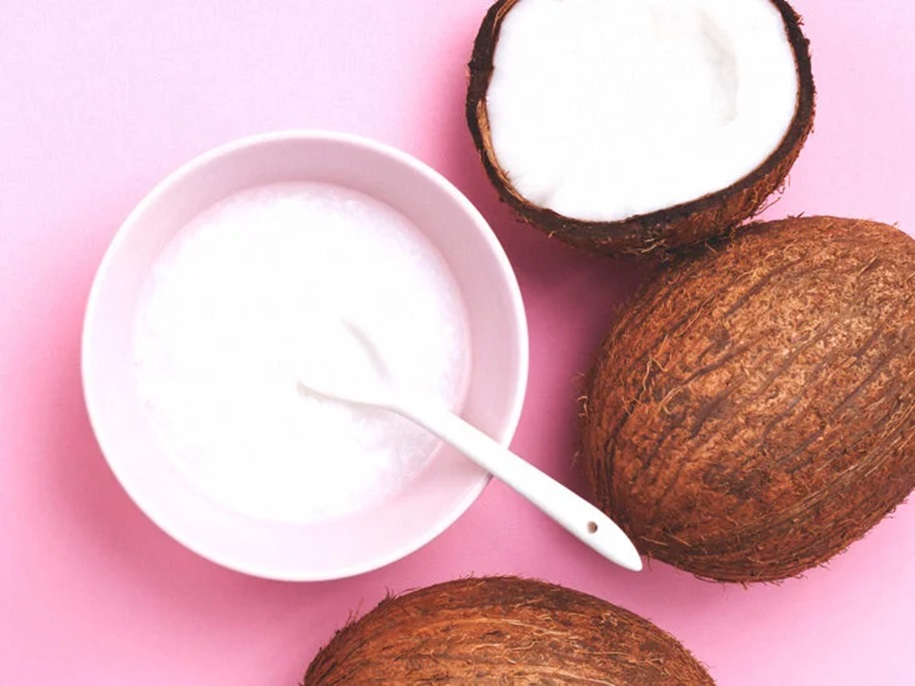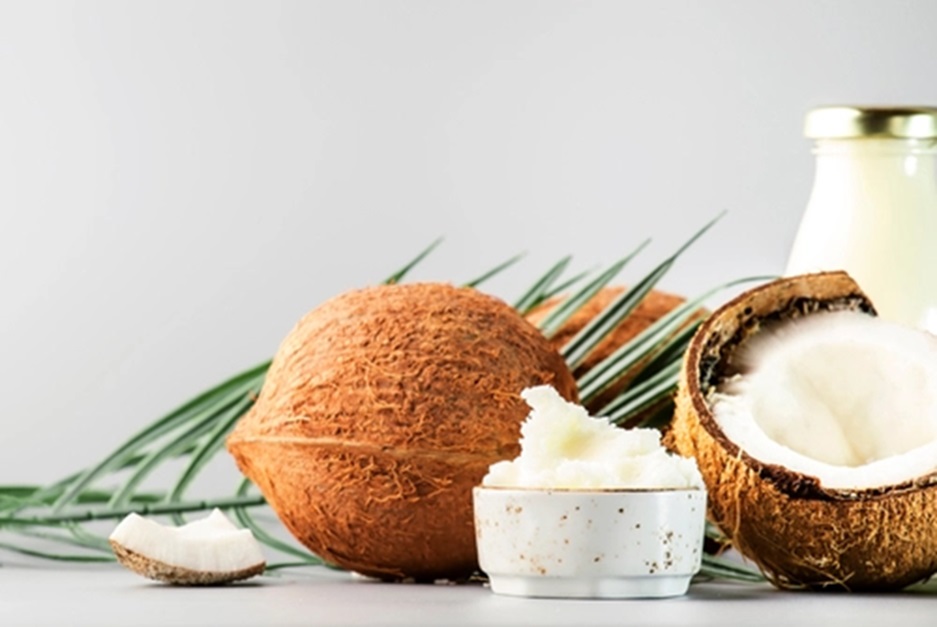We unleash your business potential by maximize the business innovation.
Send EmailLauric acid, Emery 651, Dodecanoic acid, Laurosteaic acid, 143-07-7
Lauric acid
CAS: 143-07-7
Molecular Formula: C12H24O2
Names and Identifiers
| Name | Lauric acid |
| Synonyms | Emery651 yeuguisuan Lauric acid Dodecanoic acid Laurosteaic acid lauric acid, pure lauric acid free acid sigma grade Lauric Acid (Dodecanoic acid,C12) |
| CAS | 143-07-7 |
| EINECS | 205-582-1 |
| InChI | InChI=1/C12H24O2/c1-2-3-4-5-6-7-8-9-10-11-12(13)14/h2-11H2,1H3,(H,13,14) |
| InChIKey | POULHZVOKOAJMA-UHFFFAOYSA-N |
Physico-chemical Properties
| Molecular Formula | C12H24O2 |
| Molar Mass | 200.32 |
| Density | 0.883 g/mL at 25 °C (lit.) |
| Melting Point | 44-46 °C (lit.) |
| Boling Point | 225 °C/100 mmHg (lit.) |
| Flash Point | >230°F |
| JECFA Number | 111 |
| Water Solubility | insoluble |
| Solubility | Soluble in methanol, slightly soluble in acetone and petroleum ether. |
| Vapor Presure | 1 mm Hg ( 121 °C) |
| Appearance | White needle crystal |
| Specific Gravity | 0.883 |
| Color | White |
| Maximum wavelength(λmax) | ['207nm(MeOH)(lit.)'] |
| Merck | 14,5384 |
| BRN | 1099477 |
| pKa | pKa 4.92(H2O,t =25.0) (Uncertain) |
| Storage Condition | 2-8°C |
| Stability | Stable. Combustible. Incompatible with bases, oxidizing agents, reducing agents. |
| Explosive Limit | 0.6%(V) |
| Refractive Index | 1.4304 |
| MDL | MFCD00002736 |
| Physical and Chemical Properties | Character: colorless needle-like crystals. melting point 44.2 ℃ boiling point 298.9 ℃ relative density 0.8679 refractive index 1.4304 soluble in methanol, slightly soluble in acetone and petroleum ether. |
| Use | For the preparation of alkyd resin and wetting agent, detergent, insecticide |
Risk and Safety
| Hazard Symbols | Xi - Irritant |
| Risk Codes | R36/38 - Irritating to eyes and skin. R41 - Risk of serious damage to eyes R36/37/38 - Irritating to eyes, respiratory system and skin. |
| Safety Description | S37/39 - Wear suitable gloves and eye/face protection S26 - In case of contact with eyes, rinse immediately with plenty of water and seek medical advice. S39 - Wear eye / face protection. S36 - Wear suitable protective clothing. S36/39 - S24/25 - Avoid contact with skin and eyes. |
| WGK Germany | 1 |
| RTECS | OE9800000 |
| TSCA | Yes |
| HS Code | 29159010 |
| Toxicity | LD50 i.v. in mice: 131 ±5.7 mg/kg (Or, Wretlind) |
Upstream Downstream Industry
| Downstream Products | Ethyl laurate |
Nature
colorless needle-like crystals. Melting point 44.2 °c. Boiling point 298.9 °c. The relative density was 0.8679. Refractive index 4304. Soluble in methanol, slightly soluble in acetone, petroleum ether and water.
Preparation Method
industrial production methods can be divided into two categories: one is prepared from natural plant oils by saponification or high temperature and high pressure decomposition; The second is from the synthesis of fatty acids. The natural vegetable oils used for preparation of dodecanoic acid include coconut oil, Litsea cubeba kernel oil, palm kernel oil and pepper kernel oil.
Introduction
Slightly laurel oil fragrance. Easily soluble in ether, benzene and alcohol, slightly soluble in acetone and petroleum ether. 1g soluble in 1ml of ethanol, 2.5ml of propanol, insoluble in water. Median lethal dose (mouse, vein) 131±5.7 mg/kg.
Use
raw materials for the production of alkyd resins, wetting agents, detergents, pesticides, surfactants, food additives and cosmetics.
Safety
This product is non-toxic. Small skin irritation. With a plastic bag coat hemp bag packaging, each bag of 25kg, 50kg. According to the general provisions of the storage and transportation of chemicals.
Reference Information
| FEMA | 2614 | LAURIC ACID |
| LogP | 5 |
| dissociation constant | 5.3 at 20 ℃ |
| main uses and functions | 1. lauric acid is mainly used to produce alkyd resins, wetting agents, detergents, pesticides, surfactants, food additives and raw materials for cosmetics. This product is often used as a lubricant and has many functions such as lubricant and vulcanizing agent. However, due to the corrosive effect on metals, it is generally not used for plastic products such as wires and cables. This product is most widely used in surfactant industry, and can also be used in perfume industry and pharmaceutical industry. 2. Used as surface treatment agent for bonding. It is also used in the manufacture of alkyd resins, chemical fiber oils, pesticides, synthetic fragrances, plastic stabilizers, anti-corrosion additives for gasoline and lubricating oils. A large number of surfactants are used to manufacture various types of surfactants, such as cationic laurylamine, lauronitrile, lauroylamine, lauryl dimethylamine, lauryl trimethylammonium salt, etc.; anionic types There are sodium lauryl sulfate, laurate sulfate, lauryl triethanolammonium sulfate, etc.; amphoteric ionic types include lauryl betaine, laurate imidazoline, etc; non-ionic surfactants include poly-L-alcohol monolaurate, polyoxyethylene laurate, glyceryl laurate polyoxyethylene ether, laurate diethanolamide, etc. In addition, it is also used as a food additive and used to make cosmetics. 3. lauric acid is the raw material for producing soap, detergent, cosmetic surfactant and chemical fiber oil. |
| toxicity | natural fatty acid, non-toxic. can be safely used in food (FDA,§ 172.860,2000). LD5012g/kg (rat, oral). |
| use limit | FEMA(mg/kg): soft drink 15, cold drink 16, candy 2.4, baked goods 39, pudding 25, grease 315. GB 2760-1996: fruit and vegetable peeling 3.0 g/kg. |
| use | used for the preparation of alkyd resin, wetting agent, detergent and pesticide china's regulations can be used for peeling vegetables and fruits, with the maximum usage amount being 3.0 g/kg. Defoamer; GB 2760-86 specifies spices that are allowed to be used; Formulate components of other edible additives. Dodecanoic acid is most widely used in the surfactant industry. According to the classification of surfactants, there are cationic, anionic, nonionic and amphoteric types. See the attached table of this entry for the varieties of dodecanoic acid surfactants. Some surfactants of dodecanoic acid and decanediol derivatives are also disinfectants, such as dodecyl dimethyl benzyl ammonium chloride (ketamine), dodecyl dimethyl benzyl ammonium bromide (Neo-ketamine), dodecyl dimethyl (2-phenoxyethyl) ammonium bromide (domifen). The dodecyl dimethyl ammonium -2,4, 5-trichlorophenol salt in these derivatives can be used as a preservative for citrus. Dodecanoic acid has many applications in plastic additives, food additives, perfume industry and pharmaceutical industry. |
| production methods | industrial production methods can be summarized into two categories: one is obtained from natural vegetable oils through saponification or decomposition under high temperature and high pressure; The second is to separate from synthetic fatty acids. Japan mainly uses coconut oil and palm kernel oil as raw materials to produce lauric acid. The natural vegetable oils used to produce twelve acid include: coconut oil, Litsea cubeba kernel oil, palm kernel oil and mountain pepper kernel oil. Other plants, such as palm kernel oil, rub tree seed oil, camphor tree seed oil, etc., can also be used to produce twelve acid in the service industry. The remaining C12 fraction from the extraction of dodecanoic acid contains a large amount of dodecanoic acid, which can be hydrogenated at normal pressure without a catalyst, and can be converted into dodecanoic acid with a conversion rate of more than 86%. It is obtained by separating and refining coconut oil and other vegetable oils after hydrolysis. It naturally exists in coconut oil, Litsea cubeba kernel oil, palm kernel oil and pepper kernel oil in the form of glycerides. In industry, it can be obtained by hydrolysis of natural oils and fats. Coconut oil, water and catalyst are added into an autoclave, and hydrolyzed into glycerol and fatty acids at 250 ℃ and about 5MPa pressure, which contain up to 45% ~ 80% of dodecanoic acid, and distilled to obtain dodecanoic acid. |
| spontaneous combustion temperature | 250°C |


